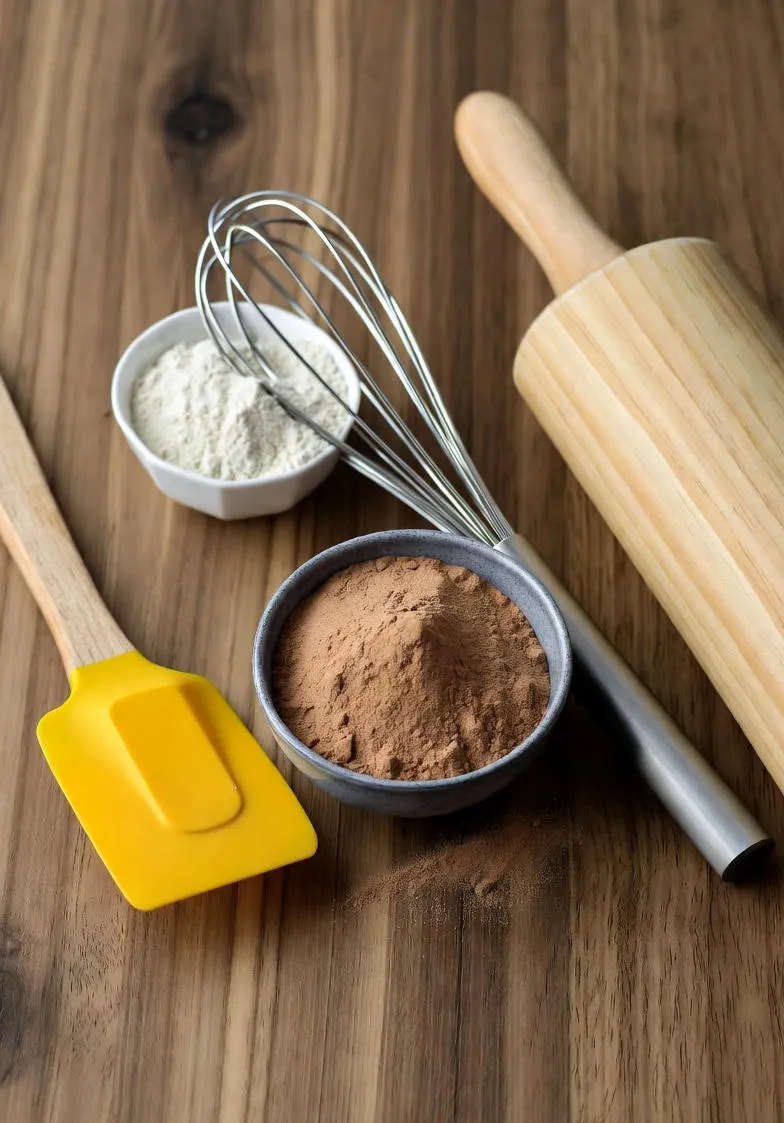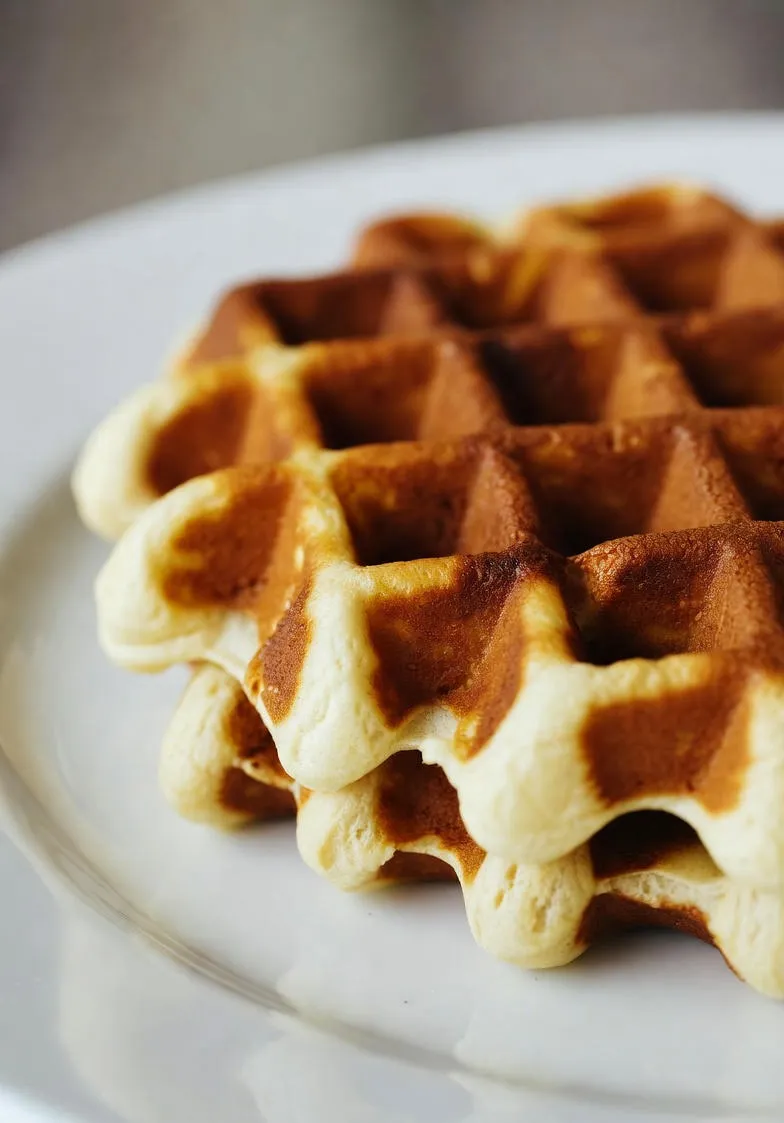Delicious Gluten-Free Muffins: Top Healthy Ingredients for Nutritious Baking
Explore top healthy ingredients for gluten-free muffins that are nutritious, moist, and flavorful. From almond flour to natural sweeteners, get recipes and tips for perfect bakes.

Why Choose Gluten-Free Muffins with Healthy Ingredients?
In today's fast-paced world, finding snacks that are both indulgent and good for you can feel like a challenge. Gluten-free muffins made with wholesome ingredients offer the perfect solution. These treats are not only safe for those with celiac disease or gluten sensitivities but also provide a nutrient boost that traditional muffins often lack. By swapping out refined flours and sugars for nutrient-dense alternatives, you can create muffins that support digestive health, stabilize blood sugar levels, and deliver essential vitamins and minerals.
Imagine starting your day with a muffin that's fluffy, moist, and bursting with natural flavors from fresh fruits and nuts. Or enjoying an afternoon pick-me-up that's free from empty calories. The beauty of gluten-free baking lies in its versatility— you can experiment with seasonal produce and pantry staples to keep things exciting. In this guide, we'll explore the best healthy ingredients to elevate your gluten-free muffins, share tips for success, and provide inspiration for your next bake.
Essential Flours for Gluten-Free Muffin Bases
The foundation of any great muffin is its flour. Traditional wheat flour is off-limits in gluten-free baking, but fear not—there are plenty of healthy alternatives that mimic its texture and structure while adding nutritional value.
Almond Flour: A Nutrient Powerhouse
Almond flour is a favorite among health-conscious bakers for good reason. Made from finely ground blanched almonds, it brings a subtle nutty flavor and moist crumb to muffins. Packed with healthy fats, protein, and vitamin E, almond flour helps keep you full longer and supports heart health. Use it as a one-to-one replacement for up to half of your gluten-free blend to avoid overly dense results. For example, in blueberry muffins, almond flour pairs beautifully with fresh berries, creating a tender bite that's naturally low in carbs.
Oat Flour: Fiber-Rich and Hearty
Grind your own oats into flour for a fresh, budget-friendly option that's high in soluble fiber. This helps lower cholesterol and promotes gut health. Oat flour adds a chewy texture that's ideal for hearty muffins like apple-cinnamon varieties. Ensure your oats are certified gluten-free to avoid cross-contamination. A simple swap: replace 30% of your base flour with oat flour for added wholesomeness without sacrificing lightness.
Coconut Flour: Low-Carb and Absorbent
Coconut flour, derived from dried coconut meat, is incredibly absorbent, so it requires more liquid in recipes—typically twice as much as other flours. Its mild sweetness reduces the need for added sugars, and it's rich in medium-chain triglycerides (MCTs) for quick energy. Perfect for tropical-inspired muffins with pineapple or mango, coconut flour yields a slightly denser, cake-like muffin that's keto-friendly.
Buckwheat and Brown Rice Flour: Whole Grain Goodness
For a nut-free option, turn to buckwheat flour, which isn't wheat at all but a seed with a robust, earthy taste. It's loaded with antioxidants and magnesium. Brown rice flour offers a neutral base with a fine texture, making it versatile for mixing with other flours. Blends like these create a balanced 1:1 gluten-free flour that's easy to work with and ensures your muffins rise beautifully.
Pro tip: Always sift your flours to prevent lumps and incorporate air for fluffier results. A good starting blend might be 50% almond flour, 30% oat flour, and 20% brown rice flour.
Natural Sweeteners: Ditching the Refined Stuff
Sugar crashes are a thing of the past when you opt for natural sweeteners that provide sustained energy and additional nutrients.
Maple Syrup and Honey: Liquid Gold
Pure maple syrup infuses muffins with caramel notes and minerals like manganese and zinc. Honey, with its antibacterial properties, adds floral depth—opt for raw varieties to maximize benefits. Both keep muffins moist without crystallizing. In banana muffins, a quarter cup of maple syrup can replace white sugar entirely, enhancing the fruit's natural sweetness.
Coconut Sugar and Date Paste: Plant-Based Delights
Coconut sugar has a lower glycemic index than cane sugar and retains some fiber from the coconut palm. Date paste, made by blending soaked dates, offers chewiness and iron. These are excellent for chocolate chip muffins, where their subtle flavors complement dark cocoa without overpowering.
Fruit Purees: Nature's Candy
Overripe bananas, applesauce, or pumpkin puree double as sweeteners and binders. Bananas provide potassium and creaminess, while applesauce keeps things light and apple-scented. Use them to cut sugar by half in your recipes for muffins that taste like dessert but fuel like breakfast.
Remember, natural sweeteners vary in moisture content, so adjust liquids accordingly to maintain the perfect batter consistency.
Flavorful Add-Ins: Fruits, Veggies, and Nuts
What sets extraordinary muffins apart are the mix-ins that add texture, color, and nutrition.
Fresh and Dried Fruits for Juiciness
Blueberries, raspberries, and strawberries release juices during baking, creating pockets of tartness amid the sweetness. Dried cranberries or raisins plump up beautifully, offering chewiness and antioxidants. For a tropical twist, diced pineapple or mango brings enzyme-rich freshness that aids digestion.
Vegetables for Hidden Nutrition
Grated zucchini or carrots add moisture without altering flavor much—ideal for "morning glory" muffins with coconut and walnuts. Pumpkin or sweet potato puree lends autumnal warmth and beta-carotene for eye health. These veggies make muffins suitable for picky eaters or as a way to sneak in more veggies.
Nuts and Seeds for Crunch
Chopped walnuts, pecans, or almonds provide omega-3s and crunch. Chia or flax seeds bind the batter like eggs while boosting fiber and lignans. Sunflower seeds offer a nut-free alternative with vitamin E. Toast them lightly beforehand to amplify flavors.
Aim for 1-1.5 cups of add-ins per dozen muffins to avoid sinking to the bottom.
Healthy Fats and Binders: Keeping It Together
Muffins need fats for tenderness and binders for structure in the absence of gluten.
Coconut Oil and Avocado Oil: Plant-Based Fats
Melted coconut oil imparts a hint of coconutty goodness and is solid at room temperature for easy handling. Avocado oil, with its high smoke point, is neutral and rich in monounsaturated fats for heart health. Both outperform butter in keeping muffins soft longer.
Eggs, Flax, and Chia: The Glue
Eggs provide lift and richness; for vegan options, a "flax egg" (ground flax mixed with water) or chia gel works wonders. These also add omega-3s, making your muffins anti-inflammatory powerhouses.
Incorporate fats by creaming them with sweeteners first, then folding in dry ingredients gently to preserve air pockets.
Baking Tips for Perfect Gluten-Free Muffins
Gluten-free baking has its quirks, but with these strategies, you'll nail it every time.
- Measure by Weight: Scoops can compact flours; a kitchen scale ensures accuracy.
- Room Temperature Ingredients: Warm eggs and fats emulsify better for even mixing.
- Don't Overmix: Stir until just combined to avoid toughness.
- Baking Powder Boost: Use fresh leaveners; add a pinch of baking soda with acidic ingredients like yogurt for extra rise.
- Cool Properly: Let muffins rest in the tin for 5 minutes, then transfer to a rack to prevent sogginess.
Preheat your oven to 350°F (175°C) and bake for 20-25 minutes, testing with a toothpick. Liners or greased tins work best to avoid sticking.
Sample Recipe: Ultimate Almond Flour Blueberry Muffins
Here's a quick recipe to get you started. Yields 12 muffins.
Ingredients:
- 2 cups almond flour
- 1/2 cup gluten-free oat flour
- 1 tsp baking powder
- 1/2 tsp baking soda
- 1/4 tsp salt
- 1/3 cup maple syrup
- 1/3 cup coconut oil, melted
- 2 eggs (or flax eggs)
- 1 tsp vanilla extract
- 1 cup fresh blueberries
- Zest of 1 lemon
Instructions:
- Preheat oven to 350°F. Line muffin tin.
- Whisk dry ingredients in a bowl.
- In another bowl, mix wet ingredients until smooth.
- Fold wet into dry, then gently stir in blueberries and zest.
- Scoop batter into tin, filling 3/4 full.
- Bake 22-25 minutes until golden. Cool and enjoy!
Nutrition per muffin (approx.): 180 calories, 15g fat, 10g carbs, 5g protein.
Variations to Keep Things Fresh
Customize endlessly: Swap blueberries for chocolate chips and cocoa for fudgy treats. Add shredded zucchini and cinnamon for a veggie-packed version. For pumpkin spice lovers, incorporate puree and warming spices like nutmeg. Vegan? Use plant milk and aquafaba. The possibilities are as endless as your imagination.
Health Benefits Beyond the Basics
These muffins aren't just tasty—they're functional foods. Almond flour's healthy fats combat inflammation, while berries' antioxidants fight free radicals. Fiber from oats and veggies supports microbiome diversity, and natural sweeteners prevent spikes in insulin. Regular consumption can aid weight management, improve satiety, and even enhance mood through steady energy release.
Studies suggest that gluten-free diets rich in whole foods like these can reduce bloating and boost overall vitality, especially when paired with a balanced lifestyle.
Storage and Make-Ahead Magic
Bake a batch on Sunday for grab-and-go snacks all week. Store in an airtight container at room temp for 2 days, fridge for 5, or freeze for up to 3 months. Thaw overnight and warm gently to revive that fresh-baked aroma.
Final Thoughts: Bake Your Way to Better Health
Embracing healthy ingredients in gluten-free muffins transforms baking from a guilty pleasure to a nourishing ritual. Whether you're fueling workouts, satisfying sweet tooths, or sharing with loved ones, these recipes prove that delicious doesn't have to compromise on health. Roll up your sleeves, preheat that oven, and discover the joy of wholesome baking. Your taste buds—and body—will thank you.


